After being abandoned in favour of concrete and steel in the 20th century, bamboo gets back into the game. Being as strong as steel in tension and having the compressive strength of concrete, it can be used as a sustainable substitute for traditional rebars and a viable, cheaper alternative to a large array of other building components. At the same time, this amazing material’s curvature and beautiful colour endow the structures made from it with a special character and bespoke aesthetics. With this post, we continue our exploration of magnificent bamboo buildings in Asia and beyond.

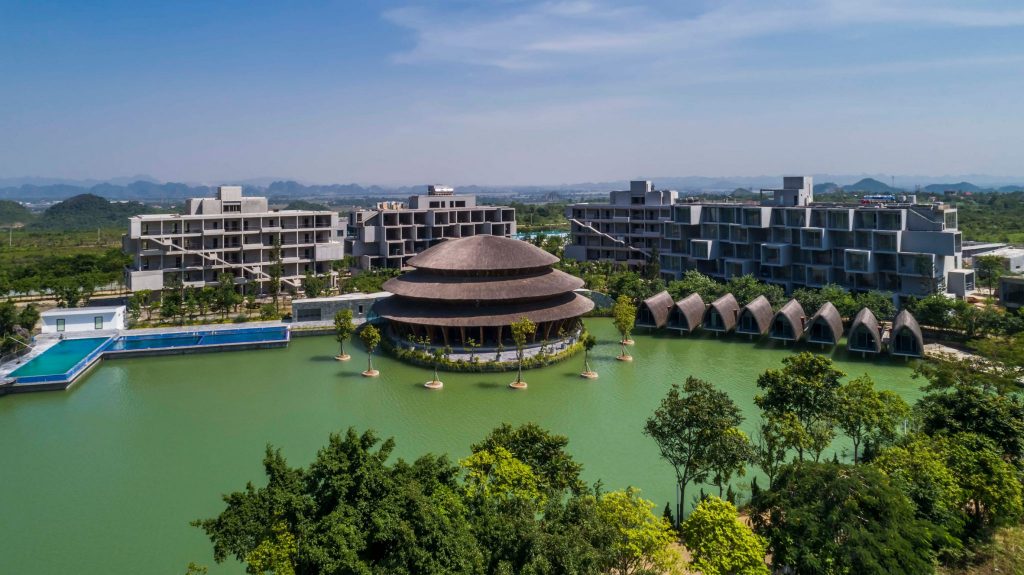
Vedana Restaurant by Vo Trong Nghia Architects
Known for their specific focus on bamboo projects, Vietnamese studio Vo Trong Nghia Architects has designed its tallest bamboo dome for Vedana Restaurant amidst a holiday complex nestled in Cuc Phuong National Park, Vietnam’s largest nature reserve. 18 metres wide and 16 metres high, the dome is made of 36 bamboo modules, which form three concentric thatched gabled structures reminiscent of traditional Vietnamese roofs.
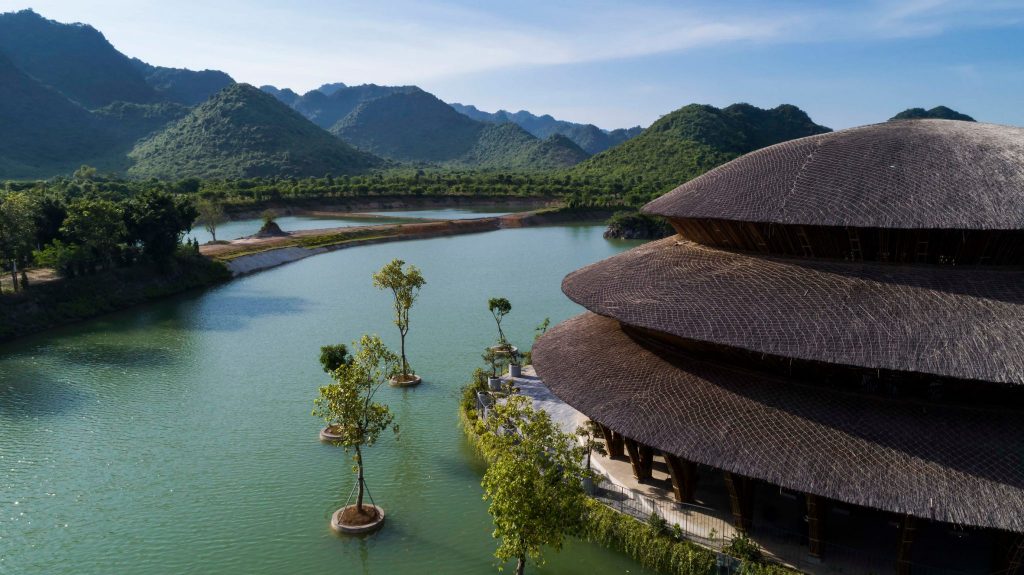
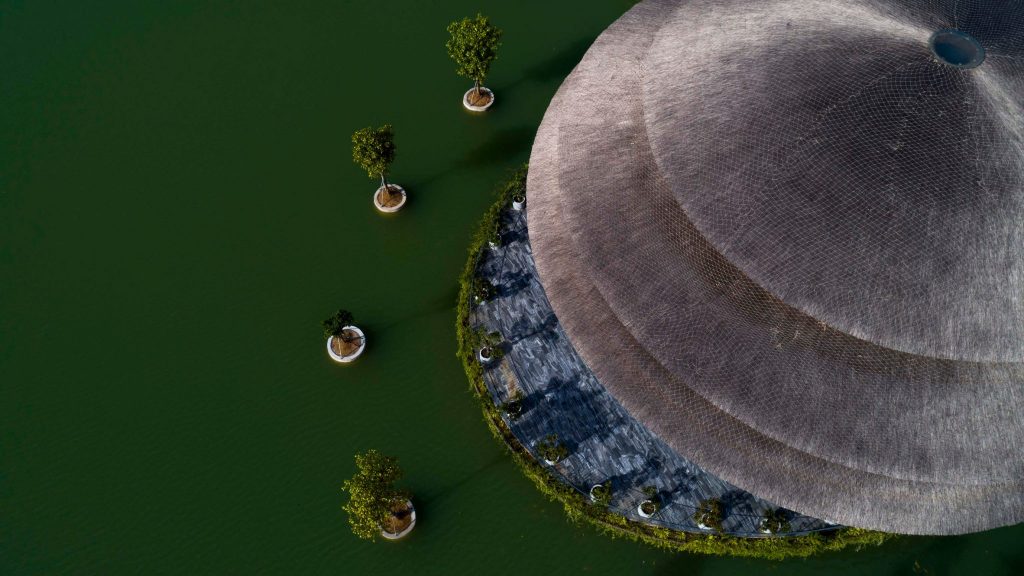
Vedana Restaurant by Vo Trong Nghia Architects
Intersecting arcs of bamboo supporting the roof structure creates a flower-like pattern on the inside of the dome, which makes an impressive sight when highlighted by a shaft of light pouring in through an oculus at the top.
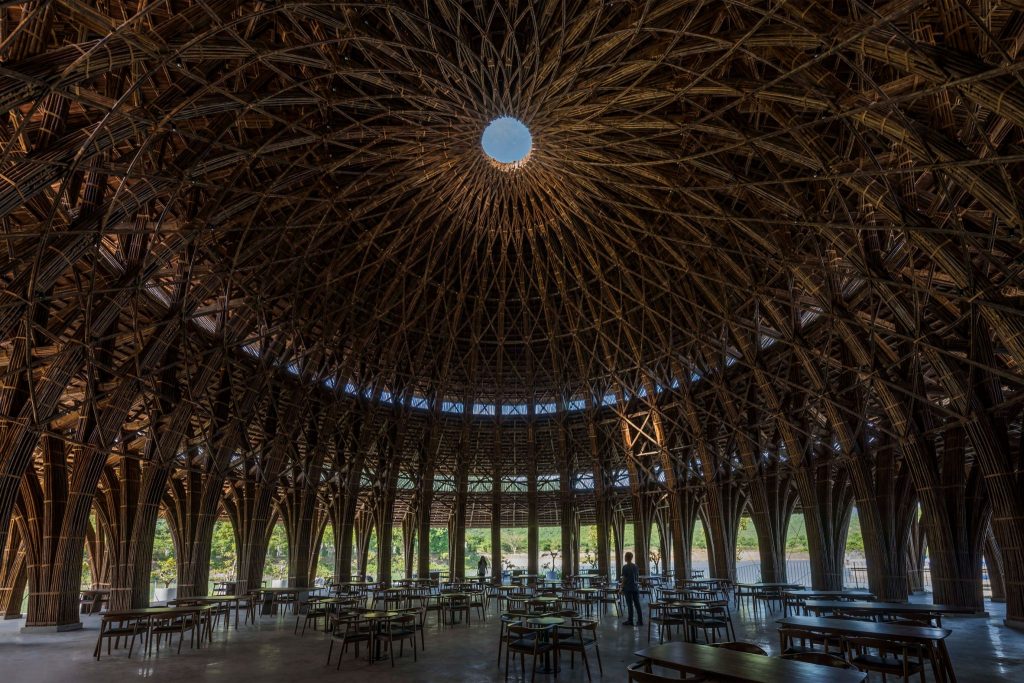
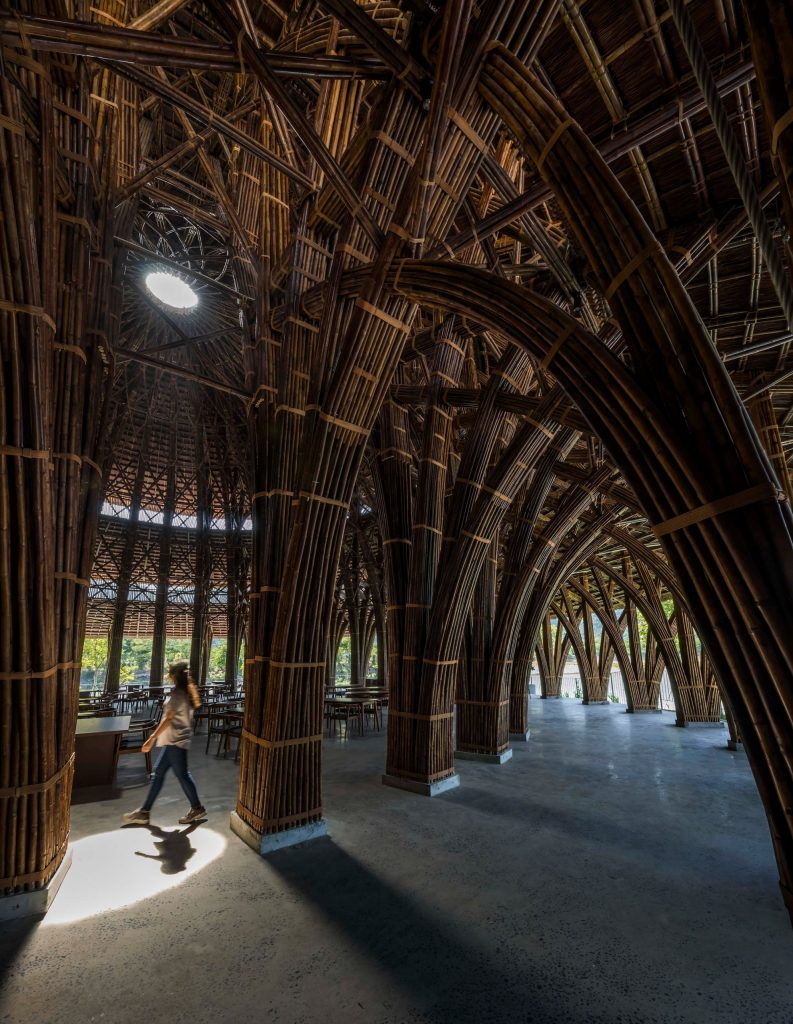
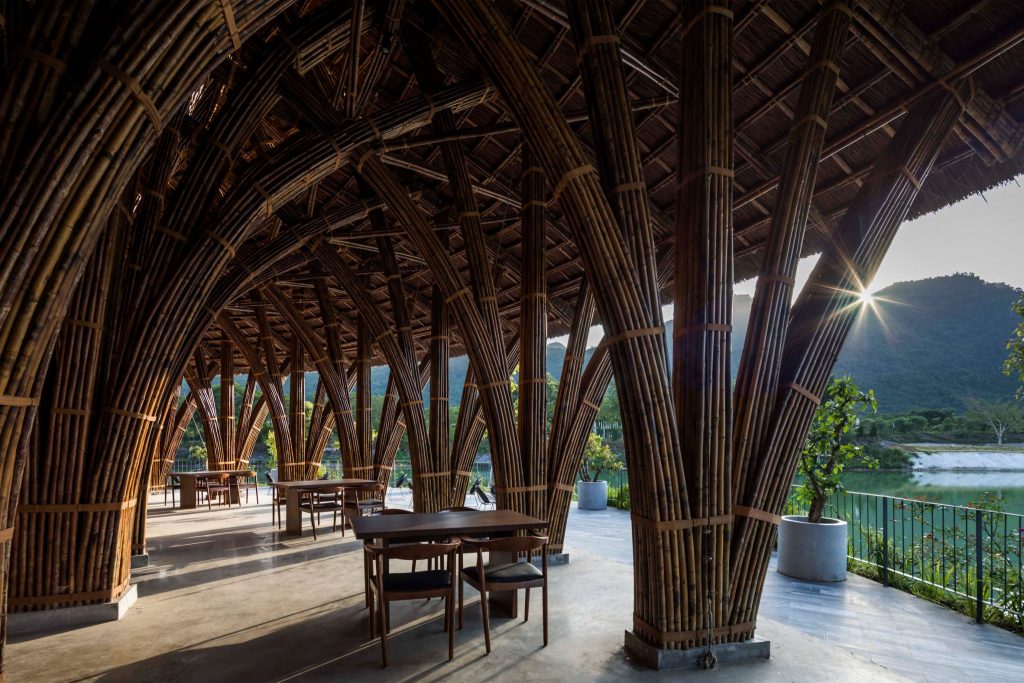
Vedana Restaurant by Vo Trong Nghia Architects
At the colonnaded base, the restaurant opens out onto the artificial lake, which acts as a natural air conditioner, cooling the air as the water evaporates from its surface. Besides, the lake is used to collect rainwater and runoff from the mountains, as well as to irrigate the many blossom trees and plants that grow around the resort.
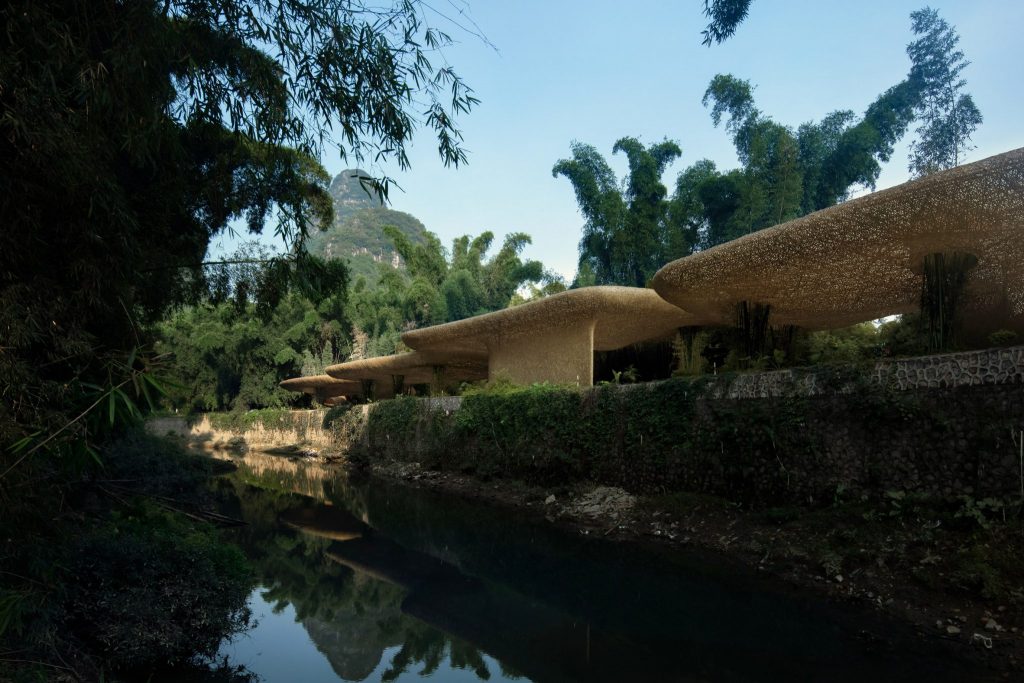
Bamboo Bamboo, Canopy and Pavilions, by LLLab
Shanghai-based architecture studio LLLab has used woven bamboo to create a canopy and a cluster of pod-like pavilions to shelter visitors to the Impression Sanjie Liu light show set amongst the limestone mountains of Guilin, one of the most dramatic landscapes in China.
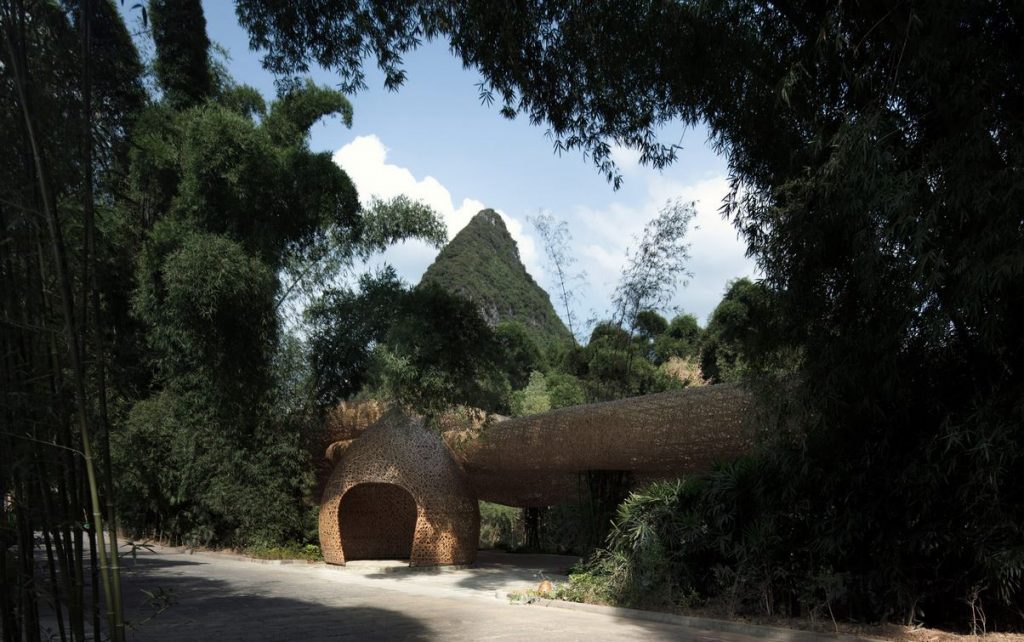
Bamboo Bamboo, Canopy and Pavilions, by LLLab
The island site used for the show already contained an entrance pagoda at one end, with the main stage at the other, with little interaction between them. LLLab’s design is intended to activate the previously underused area between the two points.
The team has chosen bamboo as the main building material for the new interventions aiming to augment, albeit very gently, the surrounding bamboo groves and hills. When entering the site, visitors are guided further by a series of woven bamboo lanterns that gradually increase in size until they become pavilions that are so large that it is possible to step inside them.
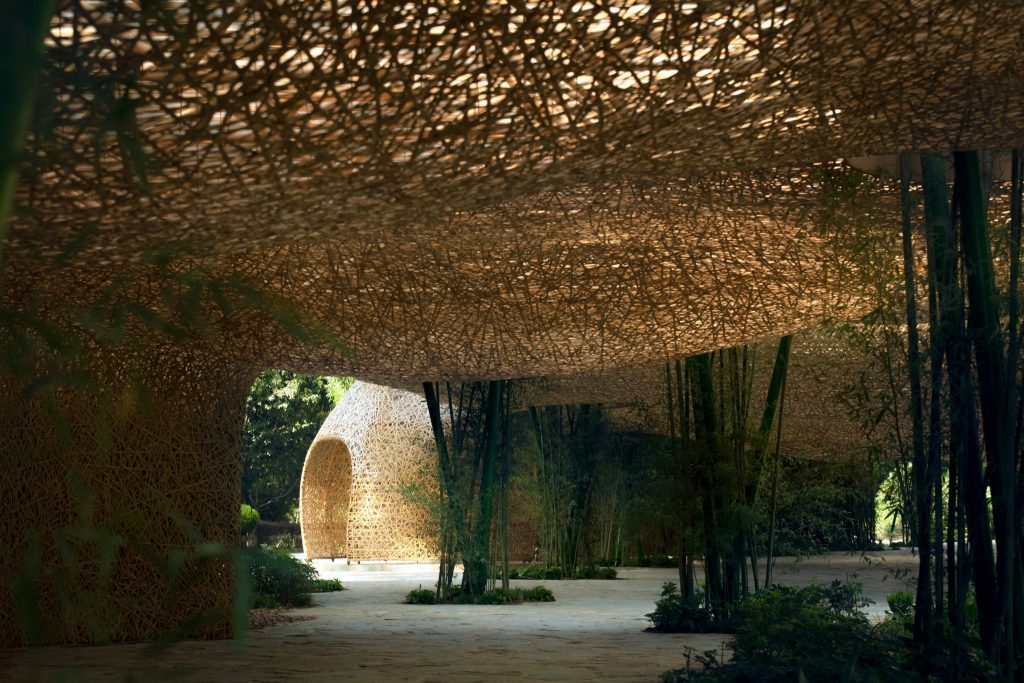
Bamboo Bamboo, Canopy and Pavilions, by LLLab
Each of the larger structures is created by the team of local artisans using bamboo stripes that are soaked and then scorched so they can be bent into the shape required for the upright and lateral members. The artisans then weave bamboo strands in a random pattern that does not require any glue or nails to hold its shape. An inner layer of clear polythene sheeting is added to this outer bamboo shell to provide protection from the elements. In the daytime, the lanterns appear as solid elements with a natural hue that complements their surroundings. At night, they are illuminated from within and seem to be a part of the light show.
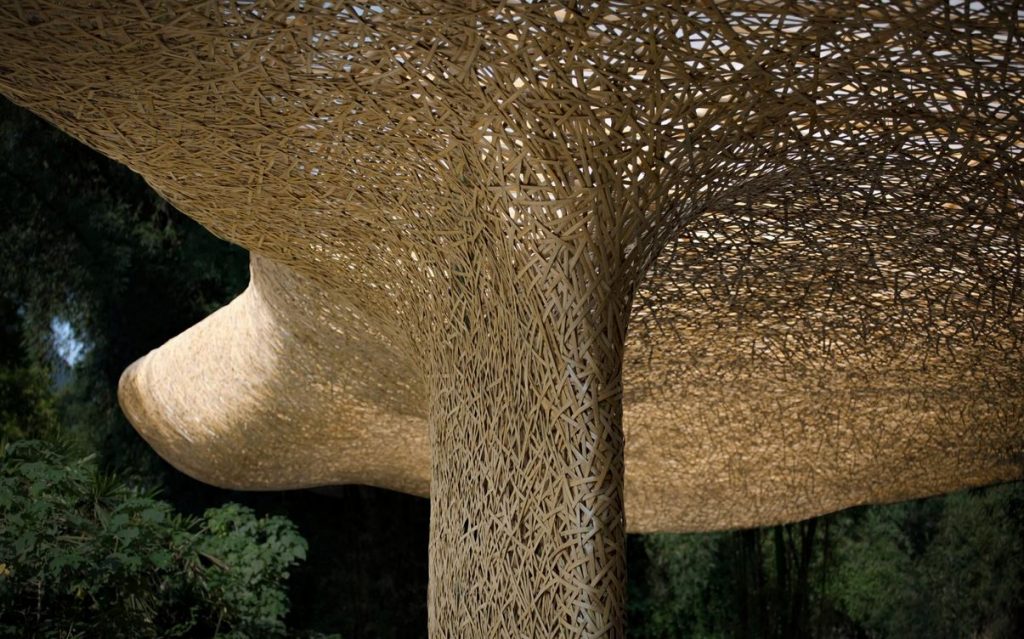
Bamboo Bamboo, Canopy and Pavilions, by LLLab
Further along at the edge of the island, a woven canopy meanders through the clusters of living bamboo. The canopy is supported by angled bamboo columns concealed within living shoots that extend through circular openings in the roof.

Bamboo Bamboo, Canopy and Pavilions, by LLLab
Stretching 140m, the woven ceiling takes on a shape of an inverted landscape, undulating between different levels of surfaces in the same irregular hand-woven bamboo pattern as the lanterns. This creates different shadow effects as dappled light penetrates the structure from above. The canopy also features integrated lighting that illuminates the pathway from above and increases in intensity as visitors move towards the main stage.
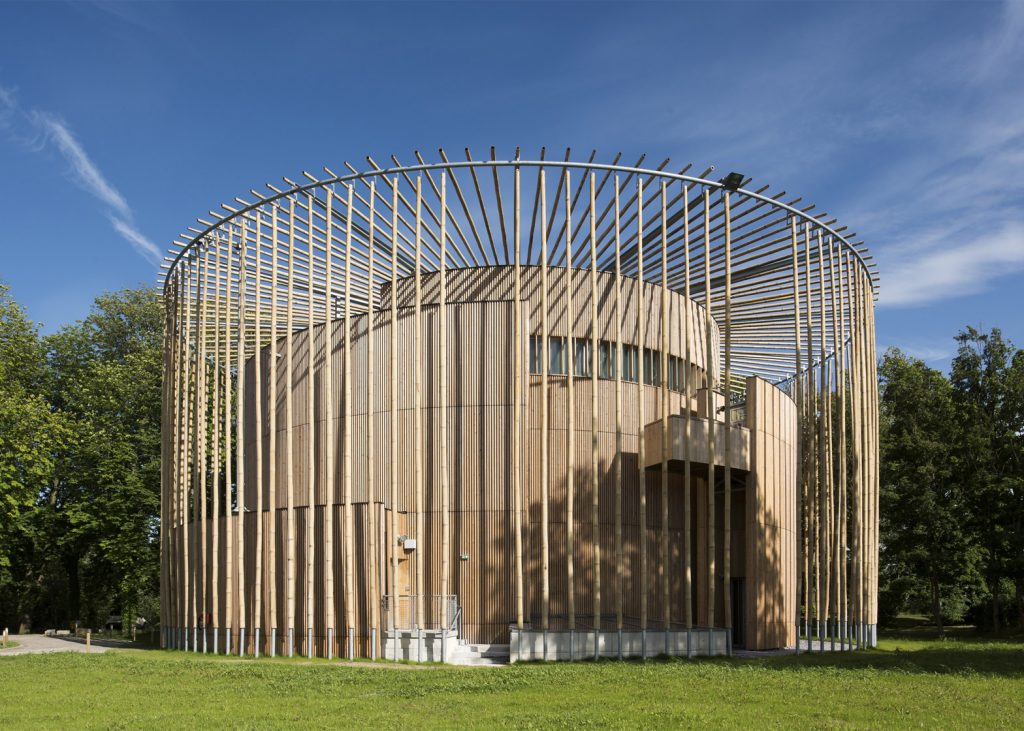
Château d’Hardelot Elizabethan Theatre by Studio Andrew Todd
The Elizabethan theatre designed by Paris-based British office Studio Andrew Todd has been singled out as the most important wood construction in France in 2016. Located in the grounds of the historical castle Chateau d’Hardelot near Calais, northern France, the building mimics the design of the Globe Theatre – a round playhouse associated with William Shakespeare that features tiered seating and a standing pit. The Chateau itself is the home of the Centre Culturel de l’Entente Cordial, which is dedicated to strengthening cultural ties between France and Britain through exhibitions, conferences, theatre and music.


Château d’Hardelot Elizabethan Theatre by Studio Andrew Todd
According to the team, the theatre is the world’s first structure constructed entirely of unfinished curved cross-laminated timber (CLT) panels – an engineered wood consisting of laminated timber sections. Towering 12m high bamboo poles encase this cylindrical wooden theatre creating a cage-like exterior, with a pathway slotted in behind. The architects chose to build the structure entirely from wood and bamboo in order to complement the surroundings, so that the building wouldn’t appear to be a stand-alone, alien object.
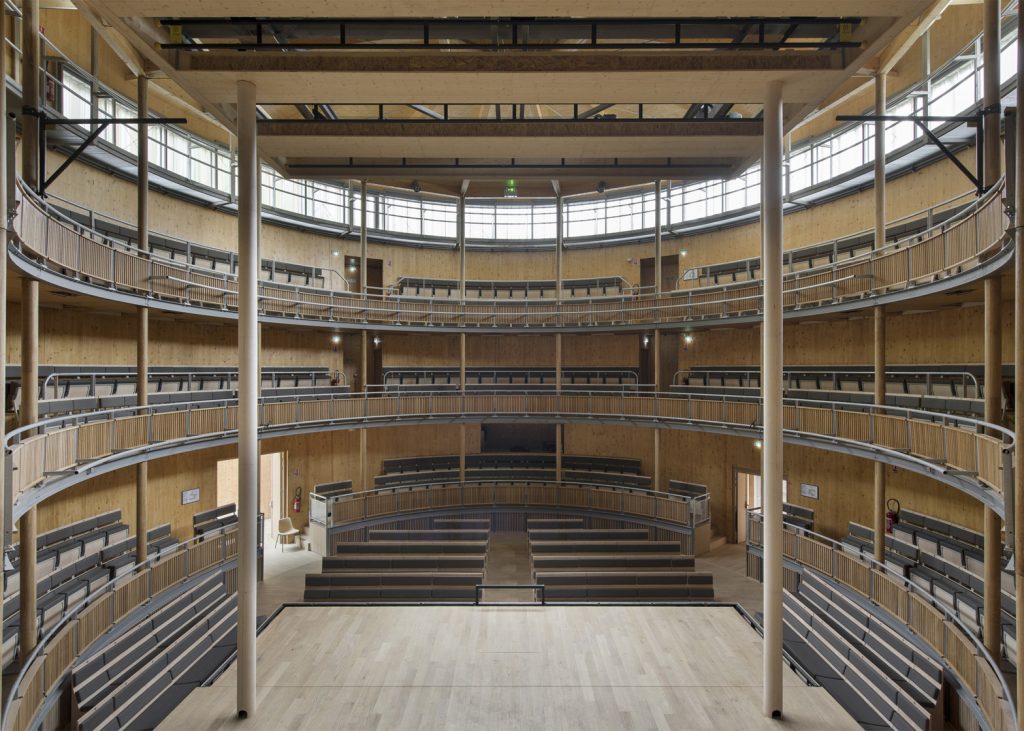
Château d’Hardelot Elizabethan Theatre by Studio Andrew Todd
Inside, a cylindrical structure clasd in larch wood houses a two-storey auditorium that seats 388 people, where the wooden structure is revealed, and complemented by the supporting oak columns and flooring. Seating is located on three levels surrounding the edge of the drum, while an open stage extends into the audience on three sides, taking cues from the Globe theatre.
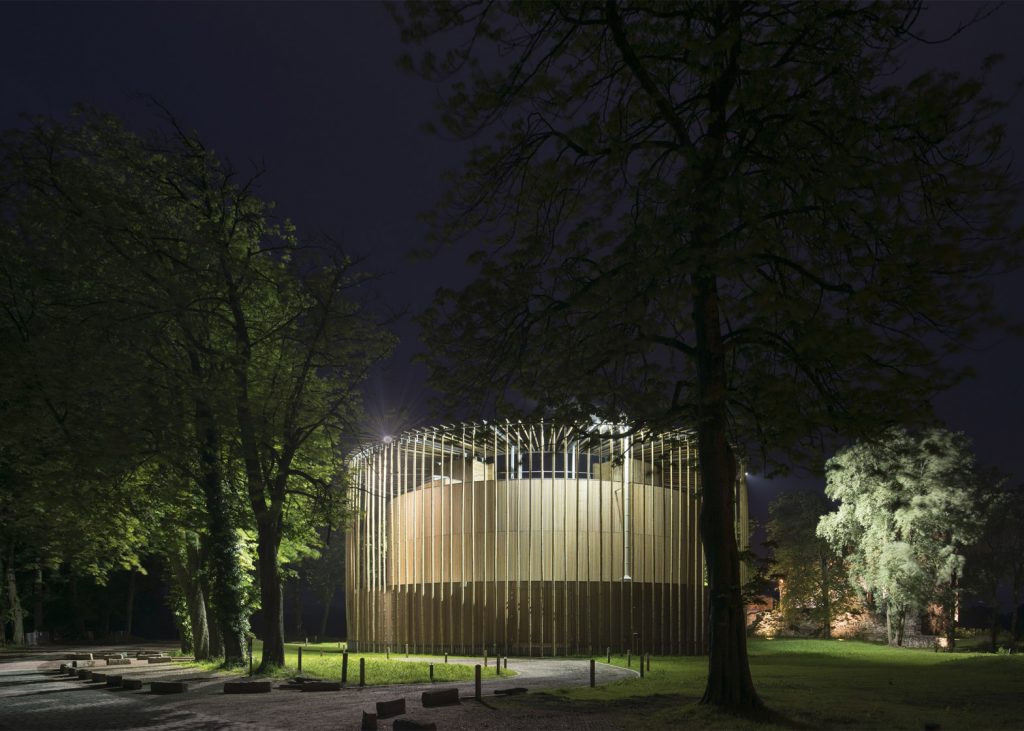
Château d’Hardelot Elizabethan Theatre by Studio Andrew Todd
The circular, wooden auditorium is naturally lit and ventilated. The building’s crown acts as a giant chimney to create a gentle current of air for the audience, while a strip of glazing at the top provides plenty of natural light. All this allows putting on a show literally with nothing, using only natural light and natural ventilation.